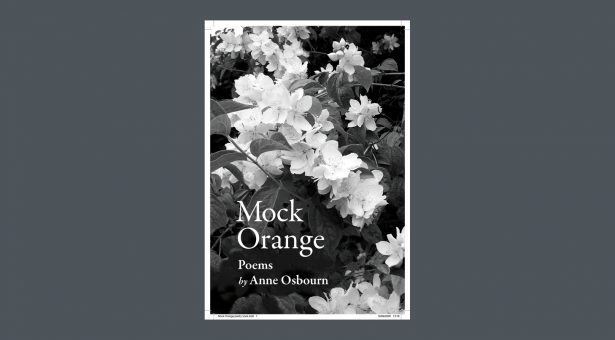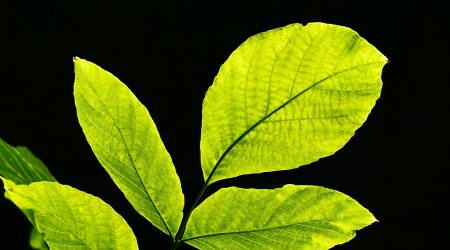Plants and poems; The story of Professor Anne Osbourn’s Mock Orange

Professor Anne Osbourn has always been passionate about popular science writing and the links between science, writing, poetry and art.
To that end, alongside her work on plant natural product biosynthesis, Anne has recently had a book of poetry published.
We sat down with Anne to talk about her writing, her work and how they combine.
“I have always loved creative writing and when I was at school the hardest decision that I had to make was whether to specialise in the arts or science.
In the end I went the science route, in part because both of my parents studied (and taught) literature. Our house was like a library, with shelves of classical literature lining the walls, and so I felt that I had access to all of that through my parents.
However, after establishing myself as a scientist and as my career progressed, I felt that something was missing.
In 2004, I was very privileged to win a National Endowment for Science, Technology and the Arts (NESTA) Dream Time Fellowship to spend a year on sabbatical in the School of Literature and Creative Writing at the University of East Anglia. It was here that I first started writing poetry.
During this time, I explored how I came to be who I am, and why I went into plant science. Linnaeus also features in my writing.
It is very rewarding over a decade on to now have my first book of poetry, Mock Orange, recognised in the Sentinel Poetry Book Prize competition and published by SPM Publications. It feels a bit like coming home.
Science and the arts both involve a combination of creativity and technical competence in their quests to find ‘the best possible truth(s)’ and while I don’t think poetry changes my scientific perspective, it has impacted on my scientific writing.
As Professor Sir David Baulcombe said of the book: ‘These poems made even this curmudgeon smile. And reflect.’
When writing poetry ‘less is more’ – no wasted words, and clarity of meaning, so bringing a scientist’s eye to writing poetry is also an interesting experience.
This is reflected in the quotes from poets Moniza Alvi and Heidi Williamson on the back cover of Mock Orange.
Moniza comments: ‘These poems fuse a plant biologist’s and a poet’s sense of wonder. Her lens is particularly clear, the observations acute and the imagination fully alive…’
While Heidi notes: ‘Osbourn combines a playful intelligence with a scientists’ eye for precision in language and image. Her acute observations of the natural world inform her explorations of our desire to find our place(s) within it…’.
Of course, I’m not the only scientist to write poetry. For example, Miroslaz Holub, an immunologist and a well-known poet, is one of my heroes in that regard.
Although scientific advances build on pre-existing evidence and knowledge, this knowledge can shift.
Scientists, like artists, are subjective. Both groups bring their pre-conceived ideas and perspectives to the problems that they tackle.
The end results are translations of a situation and a state of mind.
To quote my scientific colleague Andrew Hanson (University of Florida, US): ‘Perhaps it [Mock Orange] will help to counter the wrong-headed but widely held idea that scientists are unidimensional objectivists and that scientific creativity is unrelated to creativity’s many other expressions.’
There have been many highlights of having my book published, such as unwrapping a parcel and holding the first copy of the published book in my hand was a great moment.
My friend Kaarin Wall did the cover design – a stunning black and white image of mock orange in bloom. The book is beautifully designed, and the cover has a wonderful textured feel to it.
Many thanks to Nnorom Azuonye of SPM Publications for all of his efforts on getting the winning books published and celebrating them at a Zoom launch at which I read, along with the other prize winners Phil Vernon and Frances Corkey Thompson. It’s a real shame that we couldn’t all get together in person but the event went very well and it was good to see my fellow scientists from around the world there, along with all my poetry friends.
Finally, I am very grateful to the Sentinel poetry Book Prize judge Noel Williams, and to TS Eliot prize winning poet George Szirtes for the very thoughtful reviews of Mock Orange that they have written.”
‘Emotional Science’ – George Szirtes review of Mock Orange
“In James Fenton’s brilliant first book of poetry, Terminal Moraine, which he published at the precocious age of 23 in 1972, there is a sonnet length poem, ‘Notes’, that ends with the lines:
a pezizaform hairy sporochodium
with a flattened powdery surface layer
of globose, vesiculate, hyaline conidia.
The whole poem, he tells us, is taken from Mycologia, a scientific magazine about the study of fungi.
No other poem in the book is concerned with fungi, nor does it contain words relating to the same scientific context.
If Fenton’s ideal readers were mycologists these would have been familiar terms to them; to me it was a wonderfully exotic language that intimated rather than connoted.
Anne Osbourn, a research botanist, has long been interested in the relationship between science and poetry and has produced courses, anthologies and, naturally, poetry in her quest. But the idea of combining science with poetry would remain just an idea if poetry were simply a form into which science could be poured.
Poetry doesn’t lend itself to methodology and classification quite as readily as science does. The systematic precision of science is one thing: the deep yet precise ambiguities on which poetry is built is another.
One way of approaching the task is by placing both in a human, narrative context, and this is what Osbourn does with remarkable success.
From her personal childhood, through the great classifier-in-chief, Linnaeus, to the elderly war veteran father trying to cope with the Internet, there is a line of common, sensory and emotional experience.
The science is not distinct either from life or the sense of life.
Not surprisingly, Linnaeus himself is the subject of a group of poems, his work perceived as a domestic nuisance by his Carol Ann Duffy-ish wife, the Duffy clearly acknowledged.
Linnaeus’s scientific method may be lightly mocked but is echoed by the poet’s own experience. ‘When I was two,’ she writes in ‘Flora’, ‘I could say Primula denticulata. / I used to navigate by flowers.’
Her school’s A Level exercise of dissecting a dogfish appears in ‘Dead Ends’, which begins
My dogfish Spot was not the best
of specimens.
Giving a pet name to the dead fish one is about to cut up and explore is a way of drawing together the intimate and the procedural. Dissection is a precise operation and you would be rightly anxious if your surgeon could not distinguish one nerve from another.
Nevertheless, the creature is a creature. The spiny dogfish aka Squalus acanthias is also Spot.
Fancy names are simply precise names, and these appear throughout the book: people’s names; place names; historical names. Their function is the opposite of Fenton’s. He is dazzled by the language itself, scientific terms exoticising the normal. For Osbourn, language is a way of familiarising the strange.
The book is not simply an exercise in yoking two different worlds together. Osbourn’s ear for music and tone is complemented by her tenderness and humour.
There is a sense of fond delight in Mock Orange that glories in the multifariousness of our precarious existence on this planet.”
Reproduced with kind permission from the literary journal Orbis (Edition #194; Winter 2020).



